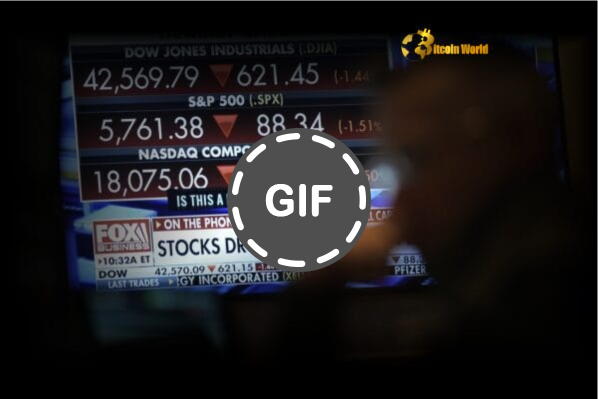BitcoinWorld

Crypto Fear & Greed Index: Unlocking Crucial Insights into Market Sentiment
The cryptocurrency market is a dynamic landscape, constantly influenced by a myriad of factors ranging from technological advancements to macroeconomic shifts. Yet, beneath the charts and headlines, lies a powerful, often overlooked force: human emotion. This is where the Crypto Fear & Greed Index steps in, offering a fascinating glimpse into the collective psyche of crypto investors. As of July 2, this crucial barometer, provided by software development platform Alternative, registered a reading of 63. While this marks a slight dip of one point from the previous day, it importantly keeps the index firmly planted in the ‘Greed’ zone. But what does this really mean for your investments, and how can you leverage this insight for more informed decisions?
Understanding the Crypto Fear & Greed Index: What Does 63 Mean for You?
At its core, the Crypto Fear & Greed Index is designed to distill the prevailing emotional state of the cryptocurrency market into a single, digestible number. Ranging from 0 to 100, it provides a spectrum where 0 signifies ‘Extreme Fear’ and 100 indicates ‘Extreme Greed’. Think of it as a market thermometer for sentiment, gauging whether participants are feeling overly cautious or excessively exuberant.
A reading of 63, as we see currently, places the market squarely in the ‘Greed’ territory. This suggests that investors are generally optimistic, confident, and perhaps even a little overzealous. While greed can fuel price rallies, pushing assets higher as more people pile in, it also carries inherent risks. Historically, periods of extreme greed have often preceded market corrections, as the market becomes overbought and vulnerable to profit-taking or unexpected negative news. Conversely, extreme fear (readings closer to 0) often signals market bottoms, presenting potential buying opportunities for those brave enough to go against the prevailing sentiment.
The index serves as a valuable counter-indicator for many experienced traders. When the market is in ‘Extreme Greed’, they might consider taking profits or reducing exposure, anticipating a potential downturn. When it’s in ‘Extreme Fear’, they might see it as a chance to accumulate assets at a discount, knowing that fear often leads to irrational selling. It’s a reminder that emotions, while powerful, can often lead to suboptimal investment decisions if not properly understood and managed.
Decoding Crypto Market Sentiment: How is it Measured?
The index isn’t just a random number; it’s a weighted average of several key factors, each contributing to the overall crypto market sentiment. By combining these diverse data points, the index aims to provide a holistic view of the market’s emotional state. Here’s a breakdown of the six factors considered:
- Volatility (25%): This component measures the current volatility and maximum drawdowns of Bitcoin compared to its average values over the last 30 and 90 days. High volatility, especially on the downside, can indicate fear, while stable or upward volatility might suggest confidence.
- Market Momentum/Volume (25%): This factor analyzes the current volume and market momentum of Bitcoin and compares it with the average values over the last 30 and 90 days. High buying volume and strong upward momentum often correlate with greed, whereas low volume and downward momentum can signal fear.
- Social Media (15%): The index scans various social media platforms, primarily Twitter, for specific keywords related to cryptocurrency. It assesses the number of posts, their engagement, and the sentiment behind them. A surge in positive, hyped discussions can indicate greed, while negative, panic-driven conversations suggest fear.
- Surveys (15%): Historically, this component involved weekly polls to gather direct sentiment from investors. However, it’s important to note that the index currently states that surveys are paused. When active, these surveys offered a direct insight into investor expectations and confidence levels.
- Bitcoin Dominance (10%): This measures Bitcoin’s market capitalization share relative to the entire cryptocurrency market. A rising Bitcoin dominance can indicate fear, as investors tend to flee riskier altcoins and consolidate into Bitcoin, perceived as a safer haven. Conversely, a falling dominance might suggest greed, as investors move into higher-risk, higher-reward altcoins.
- Google Trends (10%): This factor analyzes search query data for Bitcoin-related terms on Google. A sudden increase in search volume for terms like ‘Bitcoin price manipulation’ or ‘Bitcoin crash’ indicates fear, while a rise in general interest searches might suggest growing optimism or curiosity.
By combining these diverse data points, the index aims to provide a holistic view of the market’s emotional state, moving beyond just price action to capture the underlying mood.
The Pivotal Role of Bitcoin Dominance in Market Dynamics
While the index considers the broader crypto market, Bitcoin dominance plays a uniquely significant role, accounting for 10% of the overall score. But what exactly is Bitcoin dominance, and why does it matter so much to the Fear & Greed Index?
Bitcoin dominance refers to the ratio of Bitcoin’s market capitalization to the total market capitalization of all cryptocurrencies. For example, if Bitcoin’s market cap is $500 billion and the total crypto market cap is $1 trillion, then Bitcoin dominance is 50%. This metric is often seen as a bellwether for market sentiment and the overall health of the altcoin market.
Historically, a rising Bitcoin dominance often occurs during periods of market uncertainty or downturns. When investors become fearful, they tend to sell off their more volatile altcoins and consolidate their holdings into Bitcoin, which is perceived as the less risky, more established digital asset. This flight to ‘safety’ within the crypto ecosystem drives Bitcoin’s market share higher, signaling fear or caution. Conversely, during bull markets, especially in the later stages, Bitcoin dominance often falls as investors become more confident and speculate on higher returns from altcoins, leading to an ‘altcoin season’. A falling dominance, therefore, can sometimes be associated with increasing greed and risk appetite.
The index incorporates Bitcoin dominance because it offers a unique perspective on investor risk appetite. If Bitcoin’s share is growing, it suggests a defensive posture, a sign of fear. If it’s shrinking, it indicates a willingness to take on more risk, a sign of greed. This dynamic interplay highlights how even within the crypto market, different assets serve different psychological roles for investors, influencing the collective sentiment that the index captures.
Navigating Investor Psychology: Are We Too Greedy?
The core of the Crypto Fear & Greed Index is rooted in investor psychology. Human emotions are powerful drivers, and in financial markets, they often lead to irrational decisions. When fear takes hold, people panic sell, often at the worst possible time. When greed reigns supreme, they buy impulsively, often at market tops, chasing quick profits.
Consider the classic market cycle: accumulation, uptrend, distribution, downtrend. Each phase is heavily influenced by the prevailing emotions of market participants. During accumulation, fear is high, and few dare to buy. As the uptrend begins, optimism grows, eventually leading to euphoria and extreme greed at the peak. This is when everyone wants in, often fueled by FOMO (Fear Of Missing Out). However, it’s precisely at this point of maximum enthusiasm that smart money often begins to distribute, or sell, their holdings.
Conversely, as prices fall, optimism turns to denial, then fear, and eventually capitulation, or extreme fear. This is when many retail investors give up, selling their assets at a loss, often at the very bottom, just before a new accumulation phase begins. The Crypto Fear & Greed Index attempts to quantify these emotional extremes, providing a tool to help investors recognize where the market might be in its emotional cycle.
Being in the ‘Greed’ zone at 63 means that while the market isn’t at ‘Extreme Greed’ (which would be 75-100), there’s a strong underlying positive sentiment. This could mean continued upward momentum, but it also warrants caution. It’s a psychological trigger for investors to ask themselves: Am I making decisions based on sound analysis, or am I being swayed by the prevailing optimism? Understanding this psychological dynamic is crucial for long-term success in volatile markets like crypto.
Actionable Insights for Your Market Analysis
So, how can you effectively use the Crypto Fear & Greed Index for your own market analysis and investment strategy? It’s not a crystal ball, but it’s a powerful tool when used correctly:
1. The Contrarian Approach: Be Fearful When Others Are Greedy, and Greedy When Others Are Fearful
This timeless investing adage, often attributed to Warren Buffett, is perhaps the most direct application of the Fear & Greed Index. When the index is showing ‘Extreme Greed’ (75+), it might be a good time to consider taking some profits or reducing your exposure. The market could be overheated and due for a correction. Conversely, when the index plummets into ‘Extreme Fear’ (0-25), it could signal a generational buying opportunity, as assets are likely oversold due to panic. This requires courage and a strong conviction in your long-term investment thesis, as it means going against the crowd.
2. Complement, Don’t Rely Solely
The index is a sentiment indicator, not a definitive buy or sell signal. It should always be used in conjunction with other forms of market analysis. Combine it with technical analysis (chart patterns, support/resistance levels, moving averages), fundamental analysis (project developments, adoption rates, regulatory news), and macroeconomic factors (inflation, interest rates, global events). If the index shows ‘Greed’ but your technical indicators are signaling overbought conditions and there’s negative news on the horizon, your caution should intensify.
3. Risk Management and Portfolio Adjustments
Use the index to guide your risk management. During periods of ‘Greed’, consider reducing your position sizes or setting tighter stop-losses. During ‘Fear’, you might allocate a larger portion of your capital to new entries, assuming your research supports the underlying assets. It can help you determine whether to be more aggressive or more conservative with your portfolio allocation.
4. Understanding Market Cycles
The index provides a visual representation of market cycles driven by emotion. By observing its fluctuations over time, you can gain a better understanding of how sentiment shifts and how these shifts often precede price movements. This long-term perspective can help you avoid making impulsive decisions based on short-term market noise.
Challenges and Limitations:
- Not a Predictor: The index indicates current sentiment, not future price action with certainty. A market can remain ‘Greedy’ for extended periods, or ‘Fearful’ for longer than anticipated.
- Bitcoin-Centric: While it uses various factors, its heavy reliance on Bitcoin data means it might not perfectly reflect the sentiment of the entire altcoin market, especially smaller cap coins.
- Lagging vs. Leading: Some components of the index can be lagging indicators, meaning they reflect what has already happened rather than what will happen next.
- Surveys Paused: The absence of the survey component means one direct measure of investor opinion is currently missing, which could slightly alter its overall accuracy.
Despite these limitations, the Crypto Fear & Greed Index remains an invaluable tool for any serious crypto investor looking to gain an edge by understanding the powerful role of human emotion in the markets.
What’s Next for Crypto Market Sentiment?
With the Crypto Fear & Greed Index holding steady in the ‘Greed’ zone at 63, the immediate outlook suggests continued optimism, albeit with a slight cooling off. The one-point dip could be a minor correction, profit-taking, or a brief moment of hesitation before the market decides its next major move. It’s a healthy sign that the market isn’t yet in ‘Extreme Greed’, which often precedes significant pullbacks. This slight moderation indicates that while confidence is high, it’s not yet at a frothy, unsustainable level.
Going forward, keep an eye on the factors that influence the index. A sustained increase in volatility, particularly to the downside, or a sharp rise in Bitcoin dominance could push the index back towards ‘Fear’. Conversely, strong buying volume, positive social media sentiment, and sustained upward price momentum could propel it further into ‘Extreme Greed’. Macroeconomic news, regulatory developments, and major project updates will also play a significant role in swaying collective sentiment. As always, staying informed and adapting your strategy to changing market conditions will be key.
Concluding Thoughts: Mastering Emotional Investing
The Crypto Fear & Greed Index is more than just a number; it’s a mirror reflecting the collective emotional state of the cryptocurrency market. Its current reading of 63, comfortably in the ‘Greed’ zone, reminds us that optimism prevails, yet a slight pullback indicates a healthy dose of caution. By understanding the components of this index – from volatility and market momentum to Bitcoin dominance and investor psychology – you gain a powerful lens through which to view the market. It empowers you to move beyond impulsive decisions driven by emotion and instead, adopt a more strategic approach to your market analysis. While it should never be your sole guide, integrating this index into your broader investment framework can significantly enhance your ability to navigate the volatile yet rewarding world of cryptocurrencies, helping you to ‘be fearful when others are greedy, and greedy when others are fearful.’
To learn more about the latest crypto market trends, explore our article on key developments shaping Bitcoin price action.
This post Crypto Fear & Greed Index: Unlocking Crucial Insights into Market Sentiment first appeared on BitcoinWorld and is written by Editorial Team





